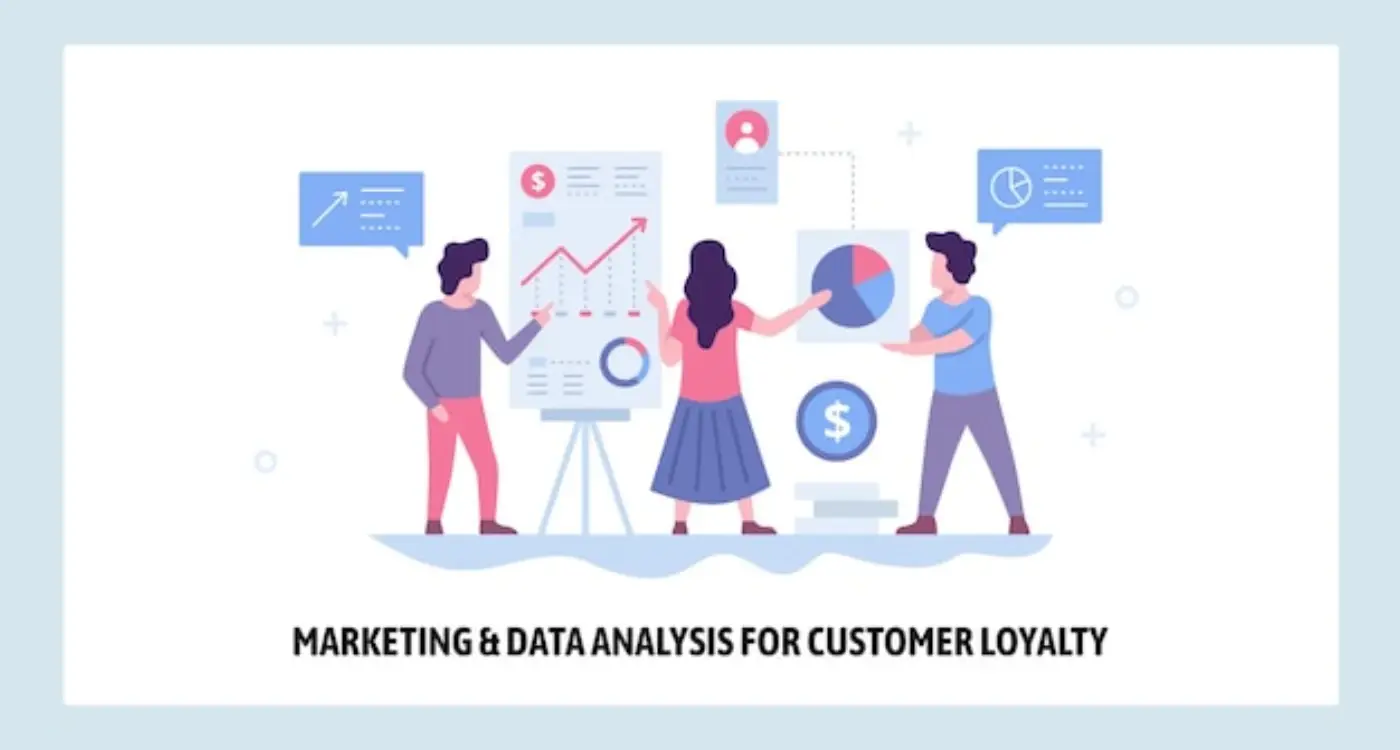How Do I Turn One-Time Users Into Daily Active Users?
Getting someone to download your app is just the beginning—the real challenge starts when they open it for the first time. After building apps for over eight years, I can tell you that the gap between one-time downloads and daily active users is where most apps fail. It's genuinely heartbreaking to watch brilliant apps with solid functionality struggle because they cant turn casual browsers into committed daily users.
Here's the thing about user engagement: its not about tricking people into using your app more often. That approach always backfires eventually. Instead, it's about understanding what makes people form genuine habits around digital products and then designing your app to support those natural behaviours. The apps that succeed long-term are the ones that become part of people's daily routines in meaningful ways—not just attention-grabbing distractions.
The best apps don't fight for attention; they earn it by solving real problems consistently and reliably
I've seen apps with millions in funding fail spectacularly at user retention, while simple apps with clear value propositions build incredibly loyal user bases. The difference usually comes down to understanding user behaviour at a deeper level. Why do people check certain apps multiple times per day whilst others get forgotten after a single use? What creates that sense of app stickiness that turns casual users into daily advocates? Throughout this guide, we'll explore the practical strategies and psychological principles that answer these questions—backed by real experience from apps I've helped build and optimise over the years.
Understanding Why Users Leave After One Session
Right, let's talk about the elephant in the room—why do users download your app, open it once, and then never come back? After building apps for everyone from small startups to major brands, I've seen this pattern more times than I'd like to admit. It's honestly one of the most frustrating parts of app development.
The brutal truth is that most apps lose 77% of their users within the first three days. That's not a typo—three days! By day seven, you're looking at losing 90% of users. These numbers used to shock me when I first started in this industry, but now I understand why they happen.
The Top Reasons Users Abandon Apps
- The app takes too long to load or crashes on first use
- Users can't figure out what the app actually does within 30 seconds
- The onboarding process is too long or asks for too much information upfront
- There's no immediate value or "quick win" in the first session
- The app doesn't match what was promised in the app store description
- Users hit a paywall before experiencing any real functionality
- The interface is confusing or doesn't follow platform conventions
Here's what I've learned from working with clients who've turned this around: the first session is make or break. Users form an opinion about your app within seconds, not minutes. If they can't quickly understand what your app does and get some value from it immediately, they're gone.
The apps that succeed—and I mean really succeed in keeping users coming back—they nail that first impression. They show users exactly what they're getting into, deliver on their promises quickly, and make the user feel smart for choosing their app. It's not rocket science, but it does require thinking like your user, not like the person who built the app.
The Science Behind Daily Habits
Right, let's talk about why some apps become part of people's daily routine whilst others get forgotten after a single use. There's actual science behind this—and it's not as complicated as you might think.
The secret lies in something called the habit loop. It's made up of three parts: a cue (something that triggers the behaviour), a routine (the action itself), and a reward (what the user gets from it). Instagram masters this perfectly; the cue might be a notification or just feeling bored, the routine is opening the app and scrolling, and the reward is seeing interesting content or social validation.
But here's where most apps get it wrong—they focus too much on the reward and forget about the cue. You need to give users a reason to think about your app at specific moments throughout their day. Weather apps do this brilliantly by becoming part of people's morning routine; they've positioned themselves as the answer to "what should I wear today?"
The 21-Day Myth
You've probably heard that it takes 21 days to form a habit. That's complete nonsense, honestly. Research shows it actually takes anywhere from 18 to 254 days, with an average of 66 days. This means your app needs to provide consistent value for at least two months before users will naturally reach for it without thinking.
Focus on creating micro-habits first. Instead of trying to get users to spend 30 minutes in your app daily, start with getting them to open it for just 30 seconds at the same time each day.
The apps that succeed understand user behaviour patterns and work with them, not against them. They make the good behaviour easier and more rewarding than the alternatives, which is exactly what we need to design for if we want genuine app stickiness.
- Identify natural trigger moments in your users' day
- Make the app action stupidly simple to complete
- Provide immediate, meaningful feedback
- Gradually increase engagement over time
- Track habit formation metrics, not just downloads
Onboarding That Actually Works
Right, let's talk about onboarding—because honestly, most apps get this completely wrong. I've seen so many brilliant apps die a slow death because they overwhelmed users in the first thirty seconds. Users don't want a fifteen-screen tutorial about every single feature you've built; they want to understand the core value of your app and experience it immediately.
The golden rule I follow with every app? Show, don't tell. Instead of explaining what your app can do, let users actually do something meaningful within the first minute. Take Duolingo—they don't spend ages explaining language learning theory, they get you translating "The boy eats an apple" straight away. You feel accomplished, you see the point, and you want to continue.
The Three-Step Onboarding Formula
After working on dozens of apps across different industries, I've found that successful onboarding follows a simple pattern:
- Hook them immediately - Show your app's core value in under 30 seconds
- Get them doing, not reading - Make the first interaction rewarding and simple
- Personalise the experience - Ask for preferences only after they've seen the value
One mistake I see constantly? Apps that ask for permissions, notifications, and personal details before users have any idea why they should care. Its backwards thinking really. First, make them love your app, then ask for their trust.
The best onboarding feels invisible. Users should feel like they're just using the app naturally, not being taught how to use it. Progressive disclosure works wonders here—introduce features gradually as users need them, not all at once in some overwhelming tour that nobody remembers anyway.
Remember, your onboarding never truly ends. Every new feature, every update, every seasonal change is a chance to re-onboard users and show them something new to love about your app.
Creating Genuine Value Every Day
Here's the thing about daily active users—they don't come back because your app is pretty or because you've got clever marketing. They come back because your app does something genuinely useful for them every single day. And I mean genuinely, not just what we think is useful in our developer bubble!
The apps that nail this understand one simple truth: your users have real problems that need solving repeatedly. Take a fitness app that doesn't just track workouts but actually suggests what exercises to do based on how you're feeling that day. Or a finance app that doesn't just show your balance but warns you before you're about to overspend on your morning coffee habit. These apps become part of people's daily routines because they add real value, not just features.
Making Your App Indispensable
I've seen so many apps try to create stickiness by adding more and more features—social sharing, gamification, badges, you name it. But honestly? Most of this is just noise if your core value isn't rock solid. Users will tolerate a slightly buggy app if it solves a real problem; they won't use a polished app that doesn't.
The best apps don't just give users what they want—they anticipate what users need before users even realise they need it
Your app needs to earn its place on someone's home screen every single day. That means understanding not just what your users do in your app, but what they're trying to accomplish in their actual lives. The most successful apps I've worked on become invisible tools—users don't think about using them, they just do. That's when you know you've created something with genuine daily value that keeps people coming back without you having to beg them to.
Push Notifications That People Want
Right, let's talk about push notifications. Most apps get this completely wrong—and I mean spectacularly wrong. They blast users with generic messages about random features or desperate pleas to "come back and check out whats new!" It's no wonder people switch off notifications faster than you can say spam.
Here's the thing though: when done properly, push notifications are one of your most powerful tools for turning casual users into daily active ones. But the key word there is properly. After years of testing different approaches across dozens of apps, I've learned that successful push notifications follow three simple rules.
Make It Personal and Timely
The best notifications feel like they were written specifically for that user at that exact moment. A fitness app shouldn't send workout reminders at 2am; a food delivery app shouldn't suggest lunch at breakfast time. Sounds obvious, but you'd be surprised how many apps ignore basic timing logic.
I always tell clients to think about notifications like text messages from a helpful friend. Would a friend send you generic updates about features you don't use? Course not. They'd tell you things that matter to you, when they matter to you.
Provide Actual Value
Every notification should answer the question: "What's in it for me?" Whether it's alerting users to price drops on items they've saved, reminding them about incomplete tasks that actually matter, or sharing personalised insights based on their usage patterns—there needs to be genuine value in every message. Generic promotional notifications are just digital noise that trains users to ignore you completely.
Building Community and Social Features
I'll be honest with you—apps that feel lonely don't stick around on people's phones for very long. After years of building apps across different industries, I've noticed something interesting: the ones with the highest daily active users almost always have some form of community or social element baked in. It doesn't have to be Facebook-level social networking, but there needs to be some human connection.
The thing is, people are naturally social creatures. Even in productivity apps, fitness trackers, or finance tools, adding a layer of community can transform how users interact with your product. I've seen meditation apps increase their retention by 40% just by adding a simple feature where users could share their streak milestones with friends.
Simple Social Features That Work
You don't need to build the next Instagram to create stickiness through social features. Some of the most effective community elements I've implemented are surprisingly basic:
- User-generated content sharing (photos, achievements, tips)
- Comment systems on shared content or challenges
- Leaderboards for friendly competition
- Direct messaging between users with similar interests
- Community challenges or group goals
- User profiles that showcase progress or expertise
Start with just one social feature and perfect it before adding more. I've seen too many apps try to build everything at once and end up with a confusing mess that nobody uses.
The Psychology Behind Social Stickiness
Social features work because they tap into several psychological drivers that keep people coming back. There's the fear of missing out on community discussions, the desire for social validation when others like or comment on your contributions, and the accountability that comes from being part of a group working towards similar goals.
But here's where many apps go wrong—they focus too much on vanity metrics like follower counts instead of meaningful connections. The apps that really nail user behaviour are the ones that help users find their tribe within the app, whether that's other new parents using a baby tracking app or runners training for their first marathon.
Using Data to Predict User Behaviour
Here's what I've learned after years of digging through user data—people are actually quite predictable. I know that sounds a bit mad, but its true. The users who stick around long-term leave breadcrumbs from day one that tell you exactly what they're going to do next.
Most developers get obsessed with vanity metrics like total downloads or session length. But honestly? Those numbers don't tell you much about retention. What you really want to track are the micro-behaviours that happen in those first few sessions.
Key Behavioural Indicators
I always tell my clients to watch for these specific actions because they're goldmines for prediction:
- Profile completion rate within 48 hours
- Number of core features used in first session
- Time spent on main value proposition
- Social interactions or content creation attempts
- Settings customisation activity
- Return visits within first 72 hours
The magic happens when you start connecting these dots. Users who complete their profile and use at least two core features in their first session? They're 3x more likely to become daily users. That's not a guess—that's what the data shows across dozens of apps I've worked on.
But here's the thing—you don't just want to observe this data, you want to act on it. Set up automated triggers that identify at-risk users based on these patterns. If someone hasn't customised their settings after 24 hours, that's your cue to send a targeted message. If they're not engaging with your core feature, guide them back to it.
Building Your Prediction Model
Start simple. Track everything, but focus on the behaviours that actually correlate with long-term retention. You'll be surprised how quickly you can spot the patterns that separate your future power users from your one-and-done visitors.
Retention Strategies That Scale
Here's the thing about retention strategies—what works for 1,000 users won't necessarily work for 100,000. I've seen brilliant retention tactics completely fall apart when apps started growing rapidly because the founders didn't think about how their strategies would scale. It's honestly one of the most common mistakes I see; people build these really personal, hands-on approaches that work beautifully in the early days but become impossible to maintain as daily active users multiply.
The secret isn't finding one magic retention strategy. It's building systems that get better as more people use them. Take user-generated content, for example. When your app has 500 users, getting them to create content feels impossible. But when you have 50,000 users, that same content becomes a powerful retention driver because there's always something new to discover. Network effects like this are your best friend when you're trying to improve user engagement at scale.
The best retention strategies become more powerful as your user base grows, not weaker
I always tell my clients to focus on three things that naturally scale: personalisation through machine learning, community-driven features, and habit-forming triggers that adapt to user behaviour. These aren't fancy buzzwords—they're practical approaches that actually work. Machine learning gets smarter with more data, communities become more valuable with more members, and behavioural triggers become more precise with larger sample sizes. Sure, setting these up takes more effort upfront than sending generic push notifications to everyone, but the payoff is massive. Your app stickiness improves while your workload decreases, which is exactly what you want when you're trying to build something that lasts.
Conclusion
After years of building apps and watching some flourish whilst others fade into obscurity, I can tell you this—turning one-time users into daily active users isn't about magic tricks or growth hacks. It's about genuinely understanding what people need and delivering it consistently, day after day.
The apps that succeed in creating lasting habits are the ones that become part of people's routines without feeling forced. They solve real problems, provide genuine value, and respect users' time and attention. Sure, you need good onboarding and smart push notifications, but those are just the tools—the real secret is making something people actually want to come back to.
I've seen too many apps focus on vanity metrics like downloads instead of the things that actually matter: retention rates, session depth, and user satisfaction. Building daily active users takes patience. It means saying no to features that don't serve your core purpose; it means testing and iterating based on real user behaviour rather than assumptions.
The mobile landscape keeps changing—new platforms, new user expectations, new privacy regulations. But the fundamentals remain the same: respect your users, solve their problems, and make their experience better each time they open your app. Do that consistently, and you'll have users who don't just download your app but actually stick around to use it every single day.
That's what separates the apps gathering dust on home screens from the ones that become part of people's daily lives. And honestly? That's the kind of app worth building.
Share this
Subscribe To Our Learning Centre
You May Also Like
These Related Guides

How Do I Use Data to Predict Which Users Will Stop Using My App?

Should I Send Different Emails To Free vs Paid App Users?



